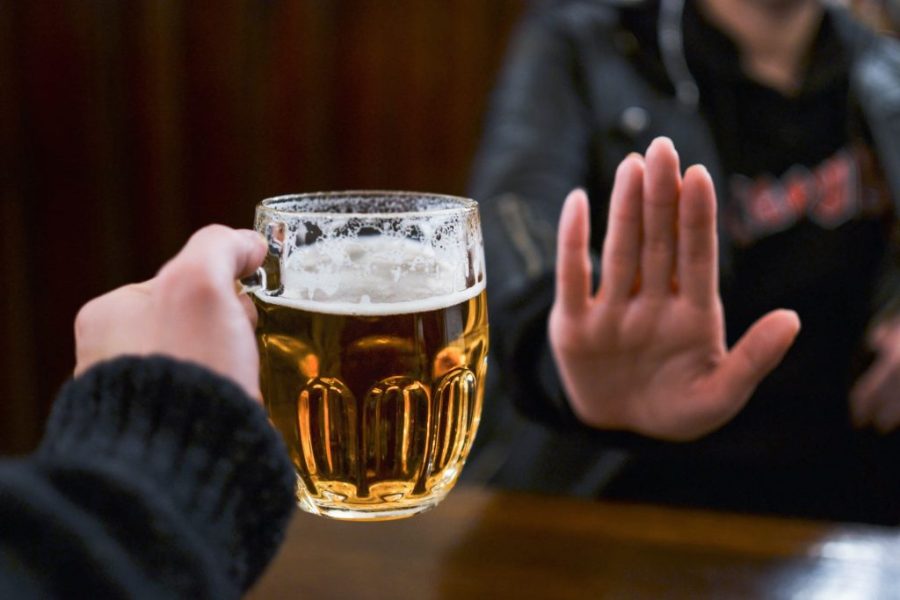
Excessive drinking as defined by the Centers for Disease Control and Prevention is binge drinking (four or more drinks in one occasion for women, or five or more for men), chronic drinking (eight or more drinks per week for women, 15 or more drinks per week for men) or heavy drinking (binge drinking five or more times within a month).
In 2019, nearly 30 percent of Ohioans aged 18-44 reported excessive drinking behaviors. This places the state slightly above the national average (25.2 percent) for the same age range. That’s more than one in four Ohio residents admitting to the overconsumption of alcohol on a regular basis.
The health effects of excessive drinking or alcohol addiction are well documented and include both short and long-term risks. The benefits of sobriety have also been recorded and include improved physical and mental health.
But not every person falls into the often polarized categorization of alcohol consumption. Most of the drinkers in the United States and Ohio fall somewhere between sobriety (or moderation) and alcoholism, in a gray area with poorly defined margins.
When does this often socially accepted “gray area” drinking turn into drinking too much or problem drinking? And when is it time to consider treatment for alcohol abuse? The answer is not always clear.
What Is Gray Area Drinking?

A gray area, as defined by the Merriam-Webster dictionary, is “an area or situation in which it is difficult to judge what is right and what is wrong.” With regard to drinking alcohol, societal acceptance of alcohol blurs the line between “safe” drinking and overconsumption. This creates a gray area of drinking, a place between moderate drinking and risky drinking patterns.
In reality, most Americans (and Ohioans) are gray area drinkers. If you’re confused about where you fall on the continuum between moderate and problem drinking, consider the following indicators.
Signs of Gray Area Drinking
If you’ve ever Googled phrases like the following, you may be dabbling with gray area drinking:
- Am I an alcoholic?
- Do I drink too much?
- Drinking too much alcohol symptoms
- What happens when you drink alcohol everyday?
Other signs of gray area drinking include:
- Commonly drinking more than intended.
- Questioning the appropriateness of your alcohol intake.
- Letting alcohol mute your desire or ability to reach goals.
- Experiencing negative, but not life stopping, consequences from alcohol use.
- Refraining from drinking alcohol for a time, then jumping back in to “live a little.”
In general, gray area drinkers do not have problems with the law (arrests, DUIs, etc.) and they are often surrounded by people who engage in the same behaviors. There is no job loss, societal difficulty, or rock bottom.
This class of drinkers may even overcompensate with “healthy” behaviors to counteract what they know deep down is problematic drinking. In the end, however, gray area drinkers begin questioning the value that alcohol brings to their lives and whether or not changes should be made.
What to Do if You’re a Gray Area Drinker

Given the lack of extremes experienced by gray area drinkers, programs like Alcoholics Anonymous and inpatient drug rehab may not resonate. Instead, these drinkers may try abstaining from alcohol completely for a time, or monitor intake by cutting back.
If you are trying to steer your drinking away from the gray area, start by applying the following tactics:
- Establish your personal goals and analyze how alcohol may be interfering with them. If alcohol is preventing progress, try cutting back to see how this affects things.
- Assess what feeling you are looking for when reaching for a drink. Are you trying to relax, alleviate boredom, or loosen up? Once you understand the real reason for drinking, try a different method of achieving the same feeling.
- When you’re craving of drink, wait 15 minutes. Going for a walk, having something to eat, or otherwise distracting yourself for a short amount of time may be all that is needed to let the craving pass.
- Make yourself a drink, and make it fancy, just don’t put alcohol in it! Sometimes a little downtime with a mocktail is all that’s needed, not the alcohol itself.
A common complaint among gray area drinkers is that despite reducing or stopping alcohol intake for a time, they always find themselves back in the gray area. If you’re tired of feeling the pendulum swing from appropriate to questionable levels of drinking, it may be time to consider help from an alcohol treatment center.
How Alcohol Treatment Can Help Problematic Drinking
The best alcohol rehab centers in Ohio will have a variety of alcohol treatment programs that can be tailored to the individual. If your level of drinking does not require 24/7 care, intensive outpatient therapy may be the best option for you.
In outpatient alcohol rehab at The Woods at Parkside near Columbus, Ohio, our patients attend treatment programming at our drug rehab facility for three hours a day, three days a week. Patients can choose either morning or evening sessions. And this flexibility allows individuals to maintain their jobs and other regular routines while receiving alcohol treatment.
The Woods at Parkside also offers an alcohol detox program, residential substance abuse treatment, dual diagnosis treatment, and both an onsite and offsite partial hospitalization program for those a little further down the road with drug or alcohol abuse.
Once you’ve completed a program at our drug rehab facility, you have the option to extending treatment in our continuing care program, a free rehab program that supports sobriety after rehab with ongoing accountability and group support.
Therefore, whether you’re a gray area drinker or struggling with more severe addiction issues, The Woods at Parkside has a program to get you back on your intended track. To reach us, call 614-471-2552 or fill out our confidential online form. No matter where you are in recovery, we are here for you.
The post How to Recognize if You’re a Gray Area Drinker appeared first on The Woods At Parkside.
Source
Original Author: The Woods at Parkside

